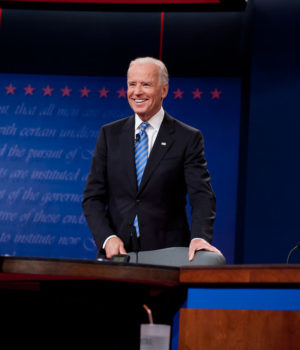Written by Joey Slusher
2019 marked President Trump’s third year in office. So far the Trump administration has been marked by a number of controversies and a mix of personal successes, such as public outcries over child detention centers and the passage of the new tax law by the Republican-controlled Congress. He and his party also saw the loss of one of the chambers of Congress, when in the midterm elections the Democrats took a majority in the House of Representatives. Aside from the failures and achievements of Trump’s administration, 2019 also saw the launch of many 2020 presidential election campaigns.
In late 2018 and into the new year, Democrats from across the nation began to announce their candidacy for the Democratic nomination for President. Such major political players as Bernie Sanders, the famous democratic socialist Senator from Vermont, and Elizabeth Warren, the progressive Senator from Massachusetts, were quick to enter the race and quickly gained as much steam as some of the races frontrunners. Other minor candidates that caused a wave of interest include the millennial mayor of South Bend, Ind., Pete Buttigieg, and entrepreneur Andrew Yang, who both gained traction as unconventional candidates in a race that was becoming quickly saturated by more than two dozen candidates.
As 2019 moved into late April, the biggest question remained: would former Vice President Joe Biden run for president? In polls of Democratic voters, Biden consistently held no less than 27 percent of voter support, which in an extremely crowded field is quite a large portion of the vote. When he finally answered that question on Apr. 25, he quickly rose ahead of the other 25 or so candidates.
To fast forward to the present, Biden remains the candidate to beat in the race, but his major competitors are far closer to him in poll numbers. Biden, a moderate, has built a platform of pragmatism and a return to the status quo. He continues to poll at around 29 percent. His main competitors at the moment, Bernie Sanders and Elizabeth Warren, have chosen to build populist progressive platforms in order to combat the President’s conservative populism. Sanders and Warren are polling at 15 percent and 17 percent, respectively, according to a recent report by the New York Times.
As the election continues, we will see if the margin between Biden and his major competitors continues to dwindle. Until then, I will be doing a profile on each of the three front runners for the Democratic nomination.




